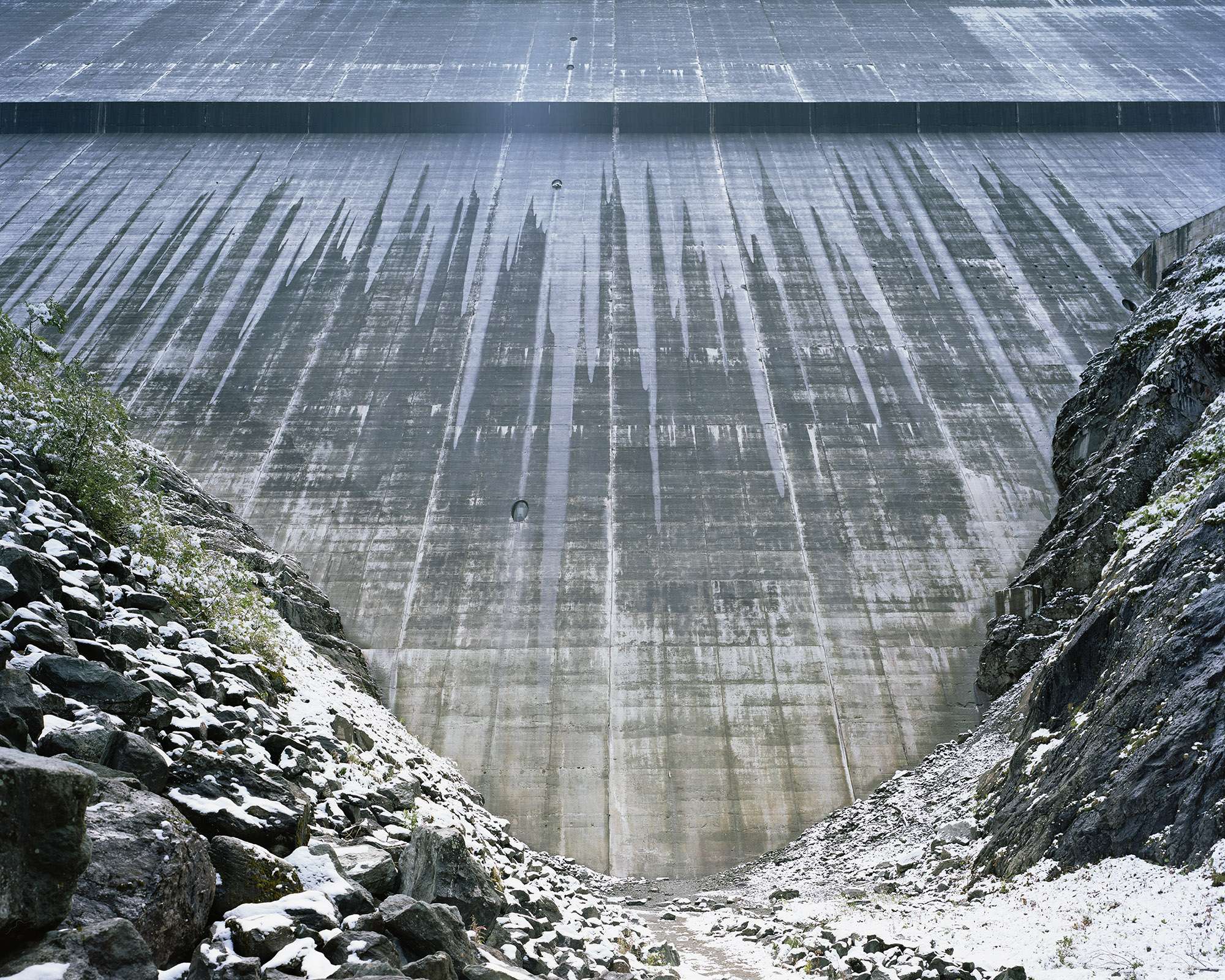
The Infrastructural Sublime: The Spectacle of Dams as a Catalyst for Environmental Consciousness
##plugins.themes.immersion.article.figure##

Resumo
Dams in the Swiss Alps are at once engineering marvels, dramatic man-made artefacts, crucial nodes in far-reaching infrastructural systems, and destructive interventions in alpine ecosystems. The essay explores the contradictory nature of dams in the Swiss Alps through the author’s photographs and the experience of the infrastructural sublime. By focusing on the coming together of rockface and cast concrete shell within the images, the dams appear as distinct naturecultures interwoven with the flows and forces of the alpine landscape. Using the sublime as a lens to describe the aesthetic experience, the essay proposes the possibility of gaining environmental consciousness and humility of the vast impact of dams, through the encounter of the infrastructural sublime.
Cover image: Lars Rolfsted Mortensen, Dixence I from the series “Infra/Super/Structure”, 2017, 128 x 160cm inkjet print
Referências
- “Energy – Facts & Figures,” Federal Department of Foreign Affairs, accessed March 27th 2023, https://www.eda.admin.ch/aboutswitzerland/en/home/wirtschaft/energie/energie---fakten-und-zahlen.html
- Stefan Schmutz and Otto Moog, “Dams: Ecological Impacts and Management”, in Riverine Ecosystem Management – Science for Governing Towards a Sustainable Future, eds. Stefan Schmutz and Jan Sendzimier, (Cham: Springer, 2018) 111
- Susanne Lange, Bernd and Hilla Becher: Life and Work (Cambridge, Mass: MIT Press, 2006), 79-83
- Hans-Georg Gadamer, Sandhed og metode: grundtræk af en filosofisk hermeneutik, trans. Arne Jørgensen (Århus: Academica, 2004 [1960]), 136-142
- Dag Petersson and Walter Niedermayr, “Photographic Space”, in Representational Machines: Photography and the Production of Space, eds Anna Dahlgren, Dag Petersson and Nina Lager Vestberg (Aarhus: Aarhus University Press, 2013) 108-110
- Edmund Burke, A Philosophical Inquiry into the Origin of our Ideas of the Sublime and the Beautiful (Cambridge: Cambridge University Press, 2014 [1756])
- Immanuel Kant, Critique of Judgement, trans. Werner S. Pluhar (Indianapolis: Hackett, 1987 [1790])
- David E. Nye, ”Technological” in Seven Sublimes (Cambridge: MIT Press, 2022)
- Donna J. Haraway, Staying with the Trouble–Making Kin in the Chthulucene (Durham: Duke University Press, 2016) 13
- Sabine Eggmann, ”Vom Stausee Verdrängt – vom Stausee Geschenkt, Technikgeschichte aus kulturwissenschaftlicher Perspektive” in Lebenskunst – Erkundungen zu Biographie, Lebenswelt und Erinnerung, eds. Konrad J. Kuhn, Katrin Sontag, Walter Leimgruber (Köln: Böhlau Verlag GmbH, 2017)
- Immanuel Kant, op.cit. 159-160
- Rob Nixon, “Unimagined Communities: Megadams, Monumental Modernity, and Developmental Refugees” in Slow Violence and the Environmentalism of the Poor (Cambridge: Harvard University Press, 2011)
- ”Dams are among the most damaging human activities in river basins, deeply modifying the physiography of watersheds” Stefan Schmutz and Otto Moog, 2018 op.cit. 113
- “Le scenario du pire”, Les Archives de la RTS, accessed June 29th 2023, https://www.rts.ch/archives/tv/divers/documentaires/7461670-le-scenario-du-pire.html
- Emily Brady, The Sublime in Modern Philosophy–Aesthetics, Ethics, and Nature (Cambridge: Cambridge University Press, 2013), 183
- Ibid., 195-201
- Brian Larkin, “The Politics and Poetics of Infrastructure”. Annu. Rev. Anthropol. No. 42 (2013) 328